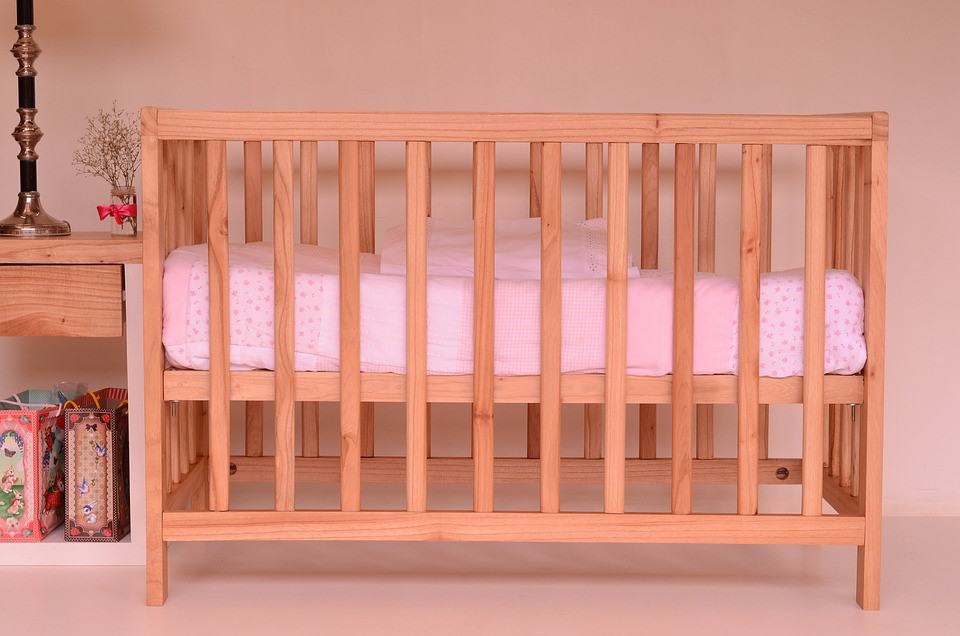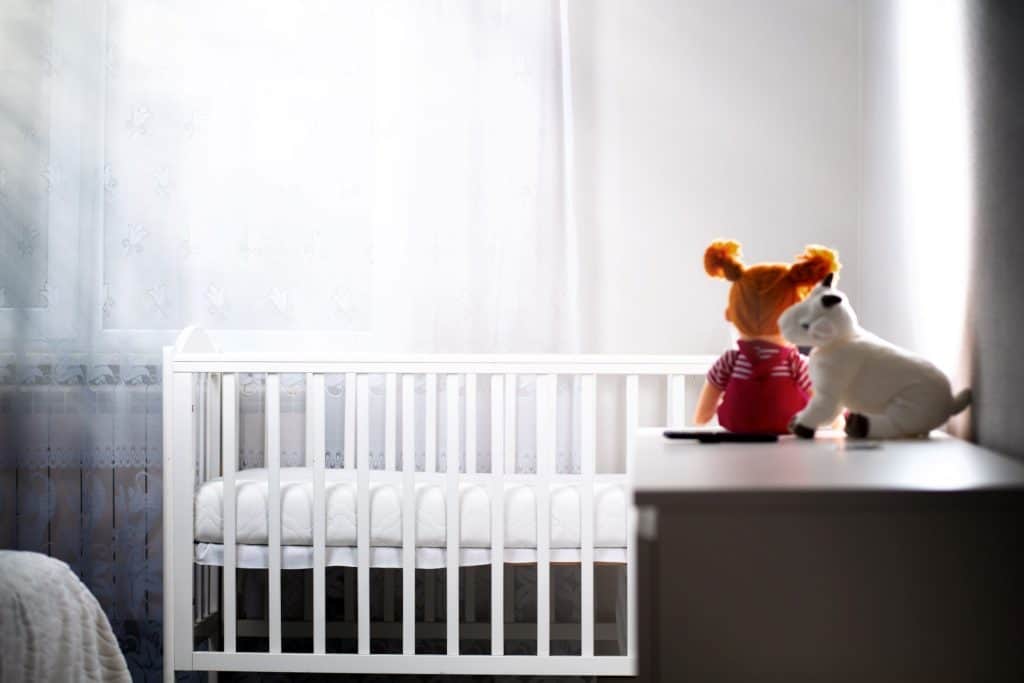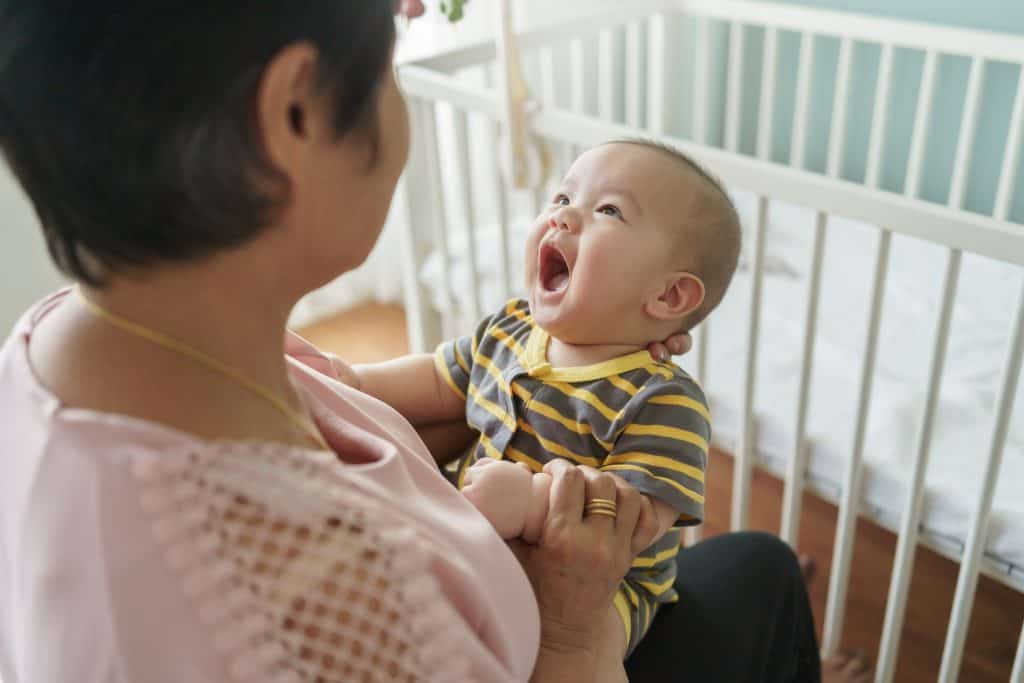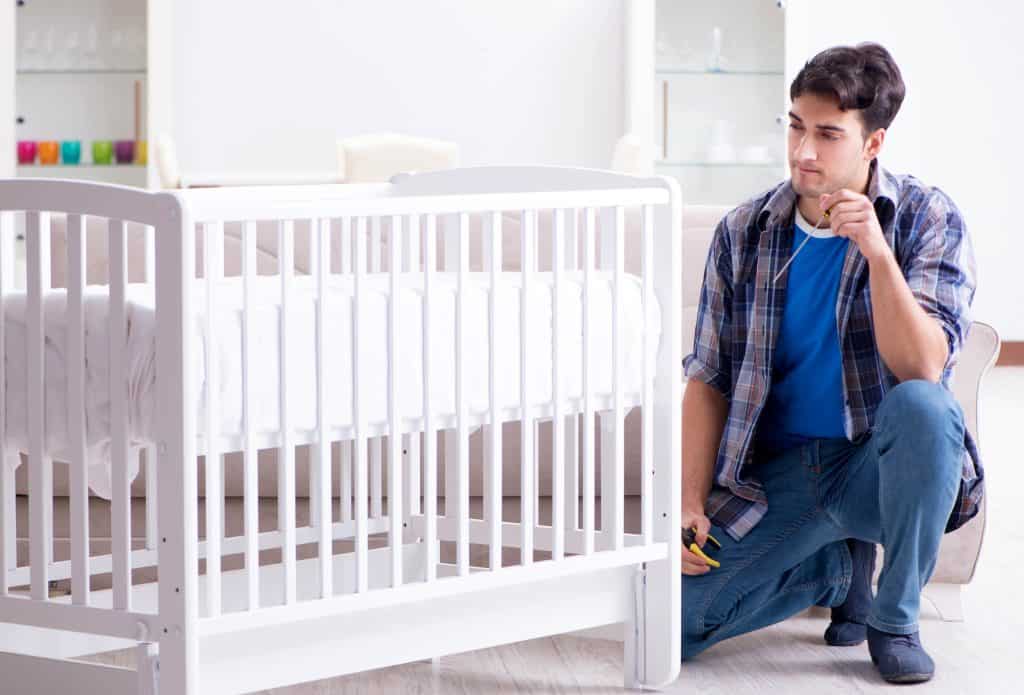Cribs are a mainstay part of every child’s nursery room, providing them with a comfy space to sleep, feed, and play early in their lives. But cribs don’t last a child forever – and if you let them go on using it for too long, the crib might even break with your kid in it!
How much weight can a crib hold? What factors do you need to consider here?
This is important information to know, as a mismatch could lead to their crib buckling or even breaking from the strain, injuring your little one in the process. Let’s go over the numbers here.
Normally, a crib can hold 35-50 lbs of weight, which is equivalent to about 16-22.7kg rounded up. A child usually won’t reach that upper limit until they’re about 7-9 years old, but there are a few other things that might notably affect their crib’s max weight limit.
- Construction material used (especially for lower load-bearing components)
- Mattress weight (which can range between 10-20lbs, equivalent to 4.5-9kg)
- Baby behavior (active, energetic babies can strain crib stability more)
- Crib maintenance (older/poorly-managed cribs may suffer from wear and tear)
Babies spend a lot of time in their cribs, so make sure you carefully consider your investment before making a purchase. You’re trusting your little one’s well-being to the product, after all.
How Much Weight a Crib Can Hold? (Factors)
1. Construction Material
Cribs are made with a ton of different materials, though the most important segments for you to note are the legs and bottom of the crib – these parts handle the bulk of your crib’s weight.
Two of the most common materials used here are wood and (more recently) vinyl.

Wood
Wood is our recommended material of choice, as it’s easily the safest option for babies. Picking out your choice of wood might seem overwhelming with all the variations available, but try to keep it simple: look for wood that’s firm, stable, weather-resistant, and scratch-proof.
Each type has its own pros and cons. For instance, oakwood ticks off all three of the parameters above but is ridiculously heavy. Pinewood is low-maintenance and great in most weather conditions, though it’s soft and prone to rack up a ton of scratches over time.
Try to figure out which drawbacks you can manage best before making your decision.
Vinyl

Plastic is actually stronger than wood – a crib made of plastic can handle a little more weight than its wooden counterparts and are far less likely to outright snap under the strain. Vinyl is also unique as far as plastics go, being quite easy to recycle. So what gives? Why not get a vinyl crib?
Vinyl might boast higher (general) tensile strength than comparative wooden cribs, but they also have the nasty habit of emitting unhealthy gases. This is because most vinyl cribs utilize a specific non-scratch coating, which quite often contains volatile organic compounds (VOCs).
Long-term exposure to VOCs has been linked to organ damage – specifically, to the kidneys, liver, and nervous system. It’s even been associated with cases of cancer!
So while vinyl can undoubtedly improve how much weight your crib can hold, the risks it comes bundled with are never worth the tradeoff.
2. Mattress Weight
Crib mattresses often weigh between 10-20lbs. You’ll be dealing with that bulk every time you have to change their sheets, so this factor contributes to things beyond your crib’s weight limits.
Mattresses are often made primarily with either cotton or foam.
Cotton
Cotton was a popular choice for mattresses for a time for good reason. While it’s not a bad option, it’s overshadowed in crib bed usage for a lot of reasons.
Cottin is heavy, which reduces how much weight your crib can hold. This also makes changing bedsheets a lot tougher on you. Cotton is also a non-responsive material, which means it provides poor back support – something very crucial for infants to have early in their lives.
Lastly, cotton also holds its shape poorly. This makes it liable to get lumpy and uneven over time, which your infant surely won’t appreciate. It doesn’t help that cotton mattresses are notorious for attracting dust mites, which can put your child at greater risk of developing asthma later in life.
Foam
While foam mattresses are far from perfect, they’re affordable, lighter than cotton, and provide good back support. They’re also less prone to deforming over time than other variants – to the point where it’s perfectly normal for foam mattresses to be passed down to younger siblings!
Their main drawback is mostly heat retention, which can lead to an uncomfortable summer sleeping experience for your infant.
Do note that this doesn’t necessarily extend to memory foam, which has been linked to cases of SIDS (Sudden infant death syndrome) in the past. While many memory foam manufacturers claim that recent production innovations rendered that risk null and void, try to get some insight from other sources first, such as parenting groups, forums, or even other moms in the neighborhood!
3. Baby Behavior (How Energetic are They?)

Another crucial factor to consider is your baby’s behavior – specifically, how animated they act.
For reference, babies can usually stand anywhere between the 6-12 month mark. They’ve been known to start jumping at the 2-year point, with some even developing that behavior in as little as 18 months. Cribs are usually used by children until they’re around 1 ½ to 3 years old.
A physically active baby can put additional strain on the product, reducing how much weight a crib can hold over a long stretch of time. They might create new stress points and weaken parts of the structure. In extreme cases, they might even break segments of their crib entirely. This risk only grows as your baby gets older (and heavier)!
You can’t really control your baby’s growth or improve a crib’s weight capacity, but you can keep an eye out for warning signs. If your baby’s crib is starting to shake or rattle due to your little one’s actions, be sure to check their crib for damages.
If you catch them acting in such physical ways, try to gently dissuade them from such behavior in the future. Your success may vary here, though.
To provide a cutoff to be mindful of, start to pay closer attention to their crib situation once your infant either reaches 2 years of age or weighs more than 25 lbs. This varies case by case, so treat these numbers as a guideline – not as a strict rule.
4. Maintenance

Lastly, cribs are naturally subjected to wear and tear over time. Even if they should technically be able to handle their expected load, it’s risky to trust a product that’s been worn down with use.
Cribs can actually last for quite a while – in fact, some families even have entire batches of kids who used the same crib growing up! If you can’t see any obvious fractures, you’re usually fine.
As a general rule of thumb, though, it’s not recommended to use cribs that are more than 10 years old. While it might seem like a shame to dispose of what looks to be a perfectly good item, you can’t trust how much weight the crib can hold anymore. Third-party modifications are strongly discouraged for similar reasons – do you really want to stake your children’s safety on that?
Final Thoughts
There are a lot of factors that determine how much weight a crib can hold. The nominal weight range of 35-50lbs isn’t absolute, and overdoing it could put your infant at risk of injury.
Everything from the crib’s material, mattress weight, and maintenance play a part here – even your baby’s behavior could influence how much weight the crib can hold. Pay close attention to ensure that your baby stays safe, snug, and secure in their cribs!